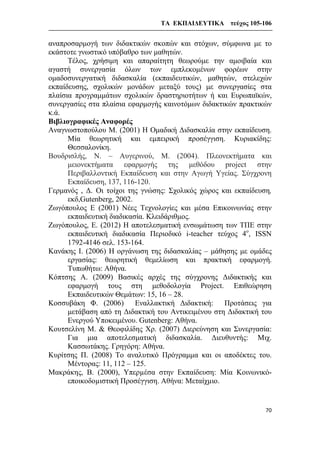Securing Elections: A Robust Poll Data System Approach

Table of Contents
Data Integrity and Security Measures
Protecting the integrity of poll data is paramount. A robust system must incorporate comprehensive security measures to prevent unauthorized access, manipulation, or destruction of data. This involves a multi-layered approach encompassing encryption, access control, and regular security audits.
Encryption and Data Protection
End-to-end encryption is fundamental for securing poll data, both during transmission and storage. Employing strong encryption protocols like AES-256 ensures that even if data is intercepted, it remains unreadable without the correct decryption key.
- Data encryption at rest and in transit: All data, whether stored on servers or transmitted across networks, must be encrypted.
- Secure key management: Robust key management practices are crucial, including the use of hardware security modules (HSMs) for storing and managing encryption keys securely.
- Regular security audits and penetration testing: Independent security audits and penetration testing should be conducted regularly to identify and address vulnerabilities.
- Compliance with relevant data privacy regulations: The system must comply with all applicable data privacy regulations, such as GDPR, CCPA, and other relevant legislation. This includes data minimization, purpose limitation, and data subject rights.
Access Control and Authentication
Restricting access to sensitive poll data is crucial. A multi-layered authentication system with strong access controls is necessary to prevent unauthorized individuals from accessing or modifying the data.
- Strict user authentication protocols: Multi-factor authentication (MFA), combining something you know (password), something you have (phone), and something you are (biometrics), should be implemented.
- Audit trails for all data access: A complete audit trail should record all data access attempts, including the user, time, and actions performed.
- Role-based access control (RBAC): RBAC ensures that users only have access to the data and functionalities necessary for their roles.
- Regular password changes and security awareness training for personnel: Regular password changes and security awareness training for all personnel involved in managing the system are vital to maintaining a strong security posture.
Transparency and Auditability
Transparency and auditability are essential for building public trust in the election process. A robust poll data system should be designed to allow for independent verification of the vote count and all data processing steps.
Open Source and Verifiable Code
Using open-source software for the core components of the poll data system promotes transparency and allows for community scrutiny. This open approach encourages independent verification and helps identify potential vulnerabilities early on.
- Publicly available source code: The source code of the system should be publicly available, allowing security experts and the public to review it.
- Independent security audits of the software: Regular independent security audits by reputable firms should be conducted.
- Use of version control systems: Employing version control systems allows for tracking changes to the codebase, enhancing accountability and facilitating audits.
- Clear documentation and API specifications: Comprehensive documentation and clear API specifications facilitate understanding and independent verification.
Auditable Data Trails
Maintaining a complete and tamper-proof record of all data processing steps is critical. Techniques like blockchain technology can help ensure data immutability.
- Blockchain technology for secure and immutable data logging: Blockchain's decentralized and tamper-evident nature makes it an ideal technology for recording election data.
- Digital signatures to verify data integrity: Digital signatures can be used to verify the authenticity and integrity of data at each stage of the process.
- Regular backups and disaster recovery plans: Regular backups and comprehensive disaster recovery plans are crucial to ensure data availability in case of system failures or attacks.
- Independent verification of vote counts: The system should facilitate independent verification of the final vote counts by authorized parties.
Scalability and Reliability
A robust poll data system must be scalable and reliable, capable of handling large volumes of data and unexpected events. A well-designed system architecture is essential for ensuring its resilience and effectiveness.
System Architecture and Redundancy
The system architecture needs to be designed for scalability and fault tolerance. Cloud-based infrastructure and redundancy are key elements.
- Cloud-based infrastructure for scalability and availability: Cloud platforms offer scalability and high availability, crucial for handling large-scale elections.
- Redundant servers and data centers: Redundancy across servers and data centers ensures system availability even in case of hardware failures.
- Load balancing to handle peak demand: Load balancing distributes the workload across multiple servers, preventing system overload during peak demand.
- Regular system backups and disaster recovery testing: Regular backups and rigorous disaster recovery testing are crucial for ensuring business continuity.
Real-time Data Monitoring and Alerting
Real-time monitoring and alerting systems are essential for detecting and responding to potential security threats or system failures promptly.
- System monitoring tools to track performance and identify anomalies: Real-time monitoring tools track system performance and identify unusual activity.
- Automated alerts for security incidents and system errors: Automated alerts provide timely notification of security incidents and system errors.
- Incident response plan for handling security breaches: A well-defined incident response plan ensures that security breaches are handled effectively and efficiently.
Conclusion
Securing elections through a robust poll data system is not just a technological challenge; it’s a critical necessity for maintaining democratic integrity. By implementing robust security measures, ensuring transparency and auditability, and prioritizing system scalability and reliability, we can significantly enhance the security and trustworthiness of our electoral processes. Investing in a robust poll data system is an investment in the future of democracy. Learn more about building a secure and reliable robust poll data system today and contribute to fair and transparent elections for all.

Featured Posts
-
 Remembering Priscilla Pointer Amy Irvings Mother 1923 2023
May 02, 2025
Remembering Priscilla Pointer Amy Irvings Mother 1923 2023
May 02, 2025 -
 Poppys Family Issues Moving Tribute After Death Of Beloved Manchester United Supporter
May 02, 2025
Poppys Family Issues Moving Tribute After Death Of Beloved Manchester United Supporter
May 02, 2025 -
 Graeme Souness Declan Rice Needs Final Third Improvement To Reach World Class Status
May 02, 2025
Graeme Souness Declan Rice Needs Final Third Improvement To Reach World Class Status
May 02, 2025 -
 Maria Alyokhinas Riot Day Edinburgh Fringe Festival Debut In 2025
May 02, 2025
Maria Alyokhinas Riot Day Edinburgh Fringe Festival Debut In 2025
May 02, 2025 -
 Negative Feedback Floods Fortnite After New Item Shop Update
May 02, 2025
Negative Feedback Floods Fortnite After New Item Shop Update
May 02, 2025
Latest Posts
-
 Ethniki Stratigiki P Syxikis Ygeias 2025 2028 Basikes Arxes Kai Efarmogi
May 03, 2025
Ethniki Stratigiki P Syxikis Ygeias 2025 2028 Basikes Arxes Kai Efarmogi
May 03, 2025 -
 Enhancing Mental Health Literacy Educational Programs And Resources
May 03, 2025
Enhancing Mental Health Literacy Educational Programs And Resources
May 03, 2025 -
 Mental Health Services Trust Care Healths Portfolio Expansion
May 03, 2025
Mental Health Services Trust Care Healths Portfolio Expansion
May 03, 2025 -
 To Ypoyrgiko Enekrine Tin Ethniki Stratigiki P Syxikis Ygeias 2025 2028 Analytiki Paroysiasi
May 03, 2025
To Ypoyrgiko Enekrine Tin Ethniki Stratigiki P Syxikis Ygeias 2025 2028 Analytiki Paroysiasi
May 03, 2025 -
 I Nea Ethniki Stratigiki P Syxikis Ygeias 2025 2028 Aksiologisi Kai Prooptikes
May 03, 2025
I Nea Ethniki Stratigiki P Syxikis Ygeias 2025 2028 Aksiologisi Kai Prooptikes
May 03, 2025
